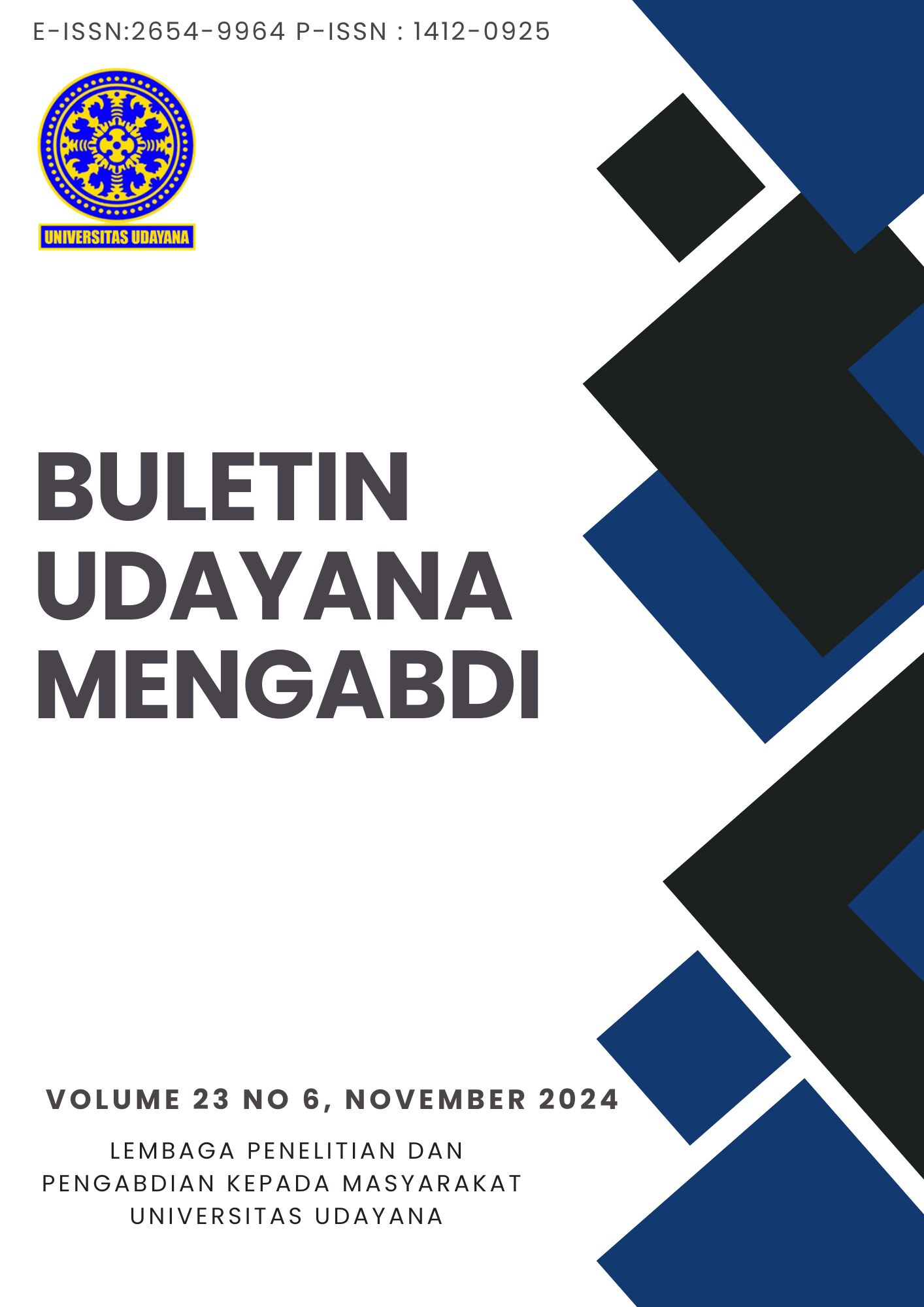PENDIDIKAN KESEHATAN PENERAPAN PEDOMAN “PEMAHAT ASIK” (PERILAKU MAKAN SEHAT DAN AKTIVITAS FISIK) UNTUK MENCEGAH MASALAH STATUS GIZI PADA ANAK USIA SEKOLAH
Abstract
Eating behavior and physical activity are factors that influence nutritional status in children. Increasing children's knowledge about healthy eating behavior and carrying out sufficient activities needs to be done to support the implementation of good behavior. Providing health education can increase understanding of healthy eating behavior and optimize the implementation of physical activity. Therefore, health education is needed for children and parents so that they can understand healthy eating behavior and adequate physical activity so that they can optimize children's nutritional status. The aim of this activity is to provide knowledge and information to students about healthy eating behavior and examples of physical activities that elementary school students can do. The method of this activity is in the form of lectures, question and answer discussions,and giving pretest and posttest questionnaires. The activity was attended by students in grades 4-6 and accompanied by the teacher in charge. The results of the questionnaire analysis showed that there was an increase in students' knowledge after being given health education. The conclusion and implication is that students can implement healthy eating behavior and do sufficient physical exercise so can optimizing the nutritional status of school-aged children.
Keywords: eating behavior, nutritional status, physical activity, school age.
Downloads
References
Aisah, S., Ismail, S., & Margawati, A. (2021). Edukasi Kesehatan dengan Media Video Animasi: Scoping Review. Jurnal Perawat Indonesia, 5(1), 641–655.
Hockenberry, M., Wilson, D., & Rodgers, Cheryl. C. (2017). Wong’s Essentials of Pediatric Nursing. Elsevier.
Jannah, M., & Utami, T. N. (2018). Faktor Yang Memengaruhi Terjadinya Obesitas Pada Anak Sekolah Di Sd N 1 Sigli Kabupaten Pidie Tahun. In Jurnal Kesehatan Global (Vol. 1, Issue 3).
Kementerian Kesehatan RI. (2022). Buku Saku Hasil Survei Status Gizi Indonesia (SSGI) 2022.
Puspita, L. M., & Utami, K. C. (2020). Sedentary Behaviour pada Anak Usia Sekolah di Kecamatan Denpasar Timur. Community of Publishing In Nursing, 8(2), p-ISSN.
Putri, R. A., Shaluhiyah, Z., & Kusumawati, A. (2020). Faktor-Faktor Yang Berhubungan Dengan Perilaku Makan Sehat Pada Remaja Sma Di Kota Semarang. 8(4). http://ejournal3.undip.ac.id/index.php/jkm
Suwandaru, C., & Hidayat , S.T. (2021). Hubungan Aktivitas Fisik dengan Prestasi Belajar Siswa SMK Negeri 1 Surabaya. Jurnal Pendidikan Olahraga Dan Kesehata, 09(01), 113–119. https://ejournal.unesa.ac.id/index.php/jurnal-pendidikan-jasmani
World Health Organization. (2010). Global recommendations on physical activity for health (ISBN 978924159997).
Fadilah, Y. N., Tanuwidjaja, S., & Saepulloh, A. (2021). Hubungan Aktivitas Fisik Dengan Kejadian Obesitas Pada Anak Sekolah Dasar Negeri 113 Banjarsari Kota Bandung Tahun 2019-2020. Jurnal Riset Kedokteran, 1(2), 80–84. https://doi.org/10.29313/jrk.v1i2.449
Zamzani, M., Hadi, H., & Astiti, D. (2017). Aktivitas fisik berhubungan dengan kejadian obesitas pada anak Sekolah Dasar. Jurnal Gizi Dan Dietetik Indonesia (Indonesian Journal of Nutrition and Dietetics), 4(3), 123. https://doi.org/10.21927/ijnd.2016.4(3).123-128

This work is licensed under a Creative Commons Attribution-ShareAlike 4.0 International License.

This work is licensed under a Creative Commons Attribution-ShareAlike 4.0 International License.




.png)


1.png) GARUDA - GARBA RUJUKAN DIGITAL
GARUDA - GARBA RUJUKAN DIGITAL



